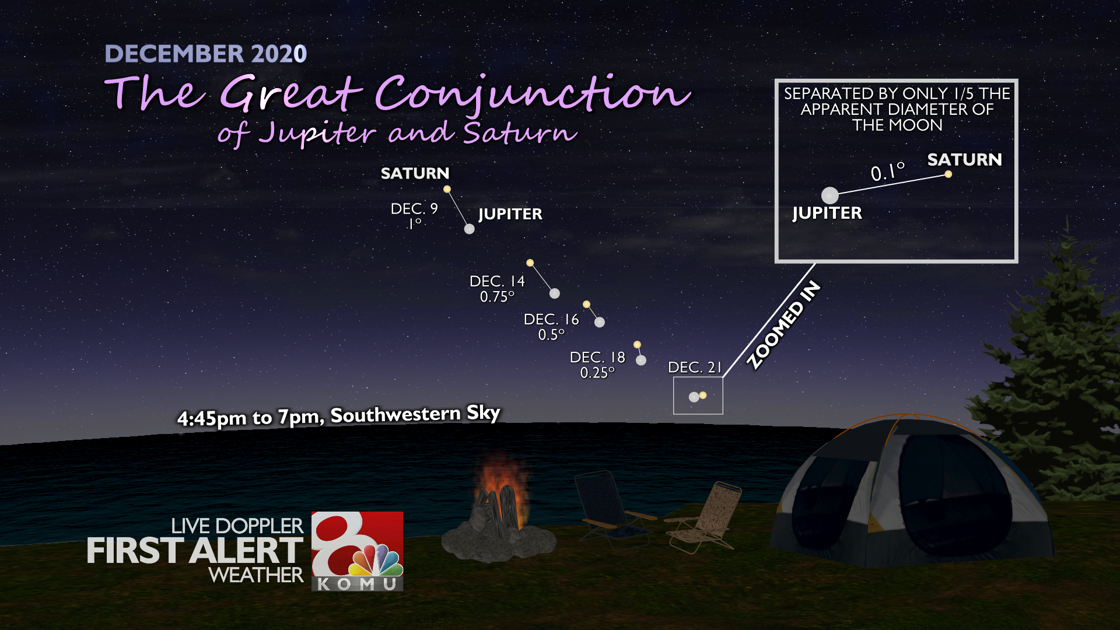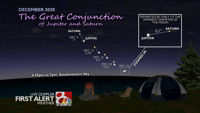
Almost 800 years ago, in 1226, two planets visibly “aligned” in the night sky. It was the conjunction of Jupiter and Saturn. In a rare case, they appeared extremely close together, 1/15 of the apparent width of the Moon.
This happened on March 4, 1226, a few months before the death of Francis of Assisi to give you an idea of the period of time. It was also the twentieth year of Genghis Khan ‘s reign and a year before his death in 1227.
Although 1226 was the last time an extremely close conjunction was seen between Saturn and Jupiter, it is not the last time this has happened. In fact, conjunctions between Jupiter and Saturn occur every 19.6 years. Due to the angle at which Jupiter (1.3º) and Saturn (2.5º) revolve around the Sun, when they meet every 19.6 years they will be at varying distances from each other, from 4º or less. Therefore, it is even rarer to see a conjunction less than 1º.
In 2020 we will be able to see one of the rare ones Close encounters, a conjunction of a tenth of a degree. To find a close conjunction similar to that of 2020, in addition to 1227, you have to go back to the 17th century.
In the summer of 1623 Galileo enjoyed the telescope he had made 14 years earlier, in 1609. Little did he know that there was a conjunction of planets. Even if I had known, I would not have seen it. This planetary alignment passed 13º from the sun and was therefore not visible from Earth. Sad day for Galileo.
Now, in 2020, we will be able to see this show in the coming weeks. If you look every night, you will notice that the two planets approach each night.
The “Great Conjunction,” as it is called, will finally take place on the night of the winter solstice.
That’s okay! Coincidentally, at the beginning of the longest night of the year we will see two planets appear separated by a tenth of a degree (0.1º). It is about one-fifth the diameter of the Moon.

When looking through a telescope or even binoculars, you will probably be able to see both Saturn and Jupiter in the same frame (already a rarity), as well as their moons.
Of course, even though these two gas giants will “appear” together, they will still be separated by hundreds of millions of miles. Jupiter is almost 545 million kilometers from Earth and Saturn 455 million kilometers beyond.
Jupiter is the largest planet in our solar system and will shine brighter. Saturn will have a golden hue.
When these two planets “meet” on December 21, be sure to see them during dusk and just after sunset. These two planets will also “fix up” pretty quickly and you don’t want to miss it. Look west.
Some have christened this encounter as the “Christmas Star” because the two planets together on December 21 will appear so big and bright. However, I will note that both astronomers and biblical scholars have determined that the star of Bethlehem during the birth of Jesus could not have been a conjunction between Jupiter and Saturn, as a conjunction during that time would have been only about half of a degree, or about the width of the Moon, and therefore not so bright. It certainly won’t be as bright as we’ll see this December 21st. Also remember that this event can occur at any time of the year, not just during the month of December. It all depends on the 19.6 year cycle.
While this event will also occur in 2040 and 2060, it will not be until March 15, 2080 that they will be visible again so close, or perhaps even a little closer than we can see in 2020.
If you see the Christmas star on December 21, be sure to send us your photos via the KOMU 8 weather app.